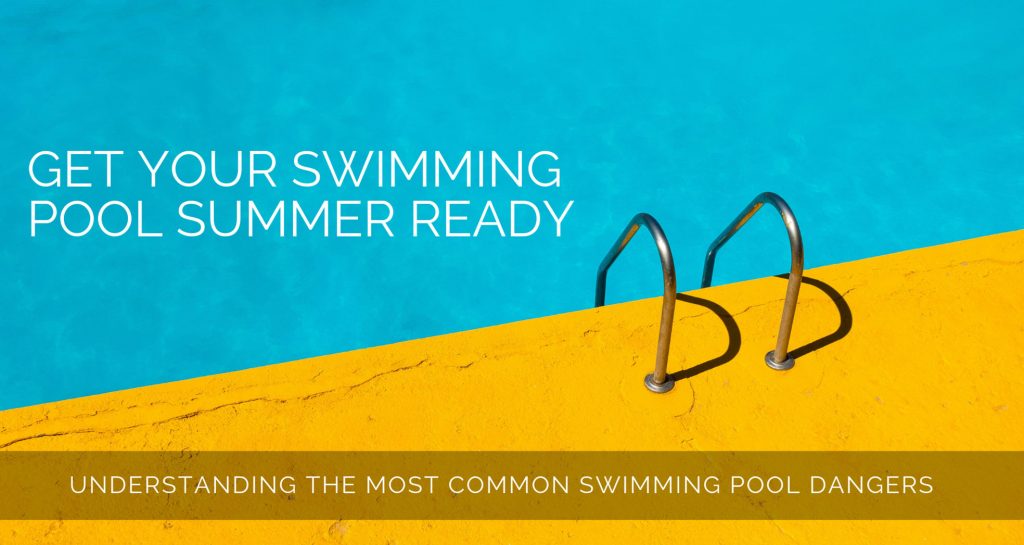
Get your swimming pool summer ready
With temperatures hitting high, a splash in a pool could provide just the respite needed. Kids and adults equally enjoy reaps of a good swim. Well, who wouldn’t enjoy a nice swim on a hot day? But did you know that swimming pools, like any other water source, could get polluted over time and can cause some nasty surprises!! Failing to maintain and monitor your swimming pool can lead to deterioration of your pool and its other features, including both equipment and pool finishes. Worst of all, poor water conditions can create an unhygienic swimming environment and pose as a health hazard, which is why, we, at Incepbio, reinstate to test your swimming water regularly, lest you want to stare at expensive maintenance or hefty medical bills.
Pool water chemicals you need to check for
Owning a pool is a huge investment which begets the need for proper maintenance and testing to ensure its longevity. It is imperative that you include testing your pool in your weekly routine.
Before we go on about the simple testing methods, we bring forward significant chemical levels that dictate the swimming environment of your pool. They are free chlorine, pH, alkalinity and calcium hardness.
The measure of each can largely decide on how comfortable and clean your pool is, while also highlighting any underlying problem that can lead to a huge expense in the coming days. These levels also work in unison while the lack of one or two can require a combination of solutions. If the testing come back with one or two levels low or on the high end, take immediate action. So, if you are wondering what components to look out for, fret not, as we brief you on how to go about in simpler terms.
Free Chlorine
Chlorine plays a substantial role in dispelling a wide array of pollutants like bacteria, viruses or organic matter such as sweat, urine, body oil, etc. that may plague your pool with continued use. Available in varied forms of pellet, liquid or powder form, chlorine is an effective sanitizing agent. While chlorine can be present in the water in the dissolved form, it is only the amount of free chlorine present that matters, for the part of sanitizing the pool. Free chlorine refers to the part of chlorine that hasn’t reacted with any pollutants.
Too little or too excess of free chlorine can affect the nature of your pool water.
If there isn’t enough free chlorine, contaminants readily affect your water, making it prone to a range of defects. The water can become too murky with unchecked algae growth along with the formation of green patches of mold growth on floors and filter cartridges which effectively will shorten the life span of your pool equipment.
Also with the lack of free chlorine, organic matter such as sweat, body oils or other components that may fall on the pool surface can turn your water cloudy and unhygienic.
To make matters worse, the lack of chlorine can subsequently lead to the spread of water-borne diseases as there is no free chlorine to attack the pathogens introduced by swimmers. This gives an ample opening for the spread of illness and other infectious water-borne ailments
On the other end, Pools with a high level of free chlorine can be detrimental to swimmers health affecting their eyes and skin. It can cause some nasty fumes like bleach which can point-blank effect breathing and cause irritation to the lungs.
A range of 1.5 -2.5 ppm of chlorine is notable for a pool to maintain hygienic swimming condition without posing as a health hazard for swimmers. It is necessary to check for chlorine levels at least 2-3 times in a week.
pH level
If pH level of water is too low or acidic in nature, swimmers can have burning eyes and other irritations of the skin. The acidic nature of the water can also be detrimental to pool equipment and accessories with the corrosion of metal components.
If the pH level of pool water is too high, it causes skin troubles and also lowers the efficacy of chlorine which can lead to unsanitary swimming conditions. To ensure longevity and hygienic condition of your pool, it is advisable for owners to check the pH level every week.
Alkalinity
Total alkalinity refers to the amount of alkaline substance in the water. The optimum amount of TA to be present in pool water should be around 90 to 120 ppm. Alkaline plays a quintessential role in maintaining your pool water’s pH level on the neutral side.
If the TA falls on the lower end, the pH of water also falls to the acidic range which can be exceptionally difficult. Swimmers can suffer from burning eyes while also bearing the brunt of swimming in dark murky waters. The Pool components and interior walls also fall victim, with the water corroding metals components and equipment of pool such as railing, ladder, etc.
On the other end, if the TA hits a high, the pH is also high which can lead to the aftermath of skin irritations to swimmers. It also impedes the working of chlorine as a sanitizer, which in turn, can spur algae and bacteria growth, inviting a whole range of health impairments. In order to see if the TA level is maintained, it is advisable for owners to check it every week.
Calcium Hardness
Hardness in pool water relates to the presence of calcium in the water while a reduced amount of calcium indicates that the pool water is too soft. The level of calcium needs to adequate, not too little or excess as both ends can mean bad results.
In case of lack of calcium, the pool water attacks the plaster of the pool to attain the calcium. The interior finish which may have been smooth gets scrapped and gains a rugged appearance making for an unsightly look.
Similarly, if the level of calcium is too high, another set of problems arise such as the scaling of your pool walls, where an excess of calcium readily deposits on your interior walls giving rise to brown or white patches everywhere.
If the hardness of pool water is accompanied with other issues such as an increase in pH and alkalinity, there is a high probability the scaling can occur on your pool components such as pumps, filter and can wreak quite a havoc. Excess of unchecked scaling can cost quite an amount of replacing failed components. You may need a complete acid wash to remove the buildup of calcium which on the whole can be quite cumbersome.
Testing methods
Checking the nature of your water and pool accessories can provide the proof on its own in the wake of a problem. If you find the water too harsh on your skin, or to be in a dark color or to have cloudy nature, you know it indicates a definite miss with the required chemical levels. Similarly scaling or algae growth on the interior walls of your pools is another indicator of unhygienic swimming condition begetting the need for proper testing and maintenance.
You can get also test strips and testing tablets for measuring the varied chemical levels mentioned above. They may have their very own set of instructions on how to go about it, which can give you a clear idea. Follow them to test your pool conditions on your own.
If it all sounds too cumbersome or you find multiple issues causing trouble, fret not, as we at Incepbio are just a call away. We undertake several testing methods to give you accurate results and solutions on how to rightly treat your water. Do refer to our website www.incepbio.com/water-testing for further information.

